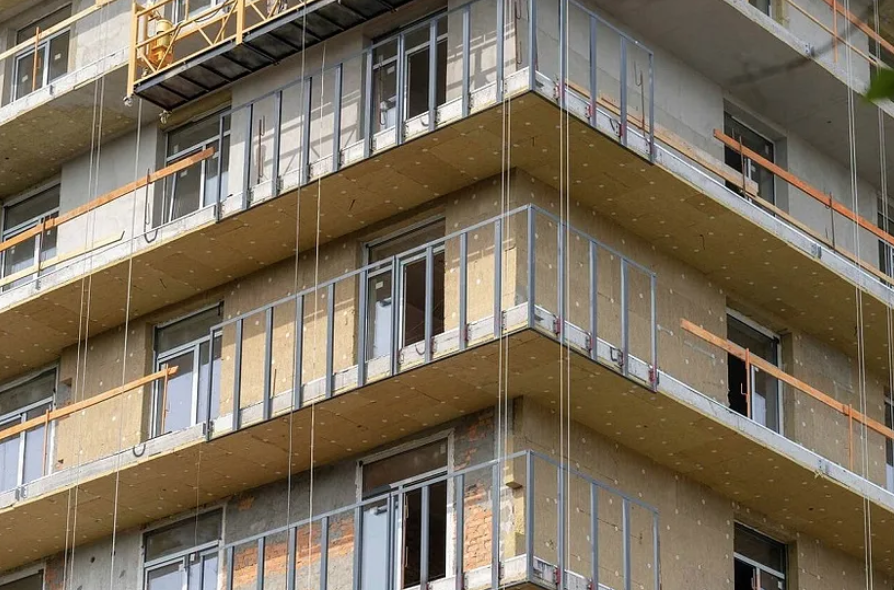COP27 — A summary, and what it means for the construction sector
This year’s COP has been hard to keep up with, with less being reported in the media. We collected what is available from the outcomes that relate to the built environment and summarise them below.
The 2-minute summary
- The built environment finally emerged as a major issue at this years’ conference
- The Breakthrough Agenda announced at COP26 was reaffirmed
- Several action and summary reports were launched, including the WorldGBC Guide to Climate Resilience and Adaptation in the Built Environment and Paris Aligned Asset Owners initiative
- The Clean Construction Accelerator was announced in the lead-up with specific actions to support the global built environment sector in halving embodied emissions by 2030

What is COP27?
The 2022 United Nations Climate Change Conference or Conference of the Parties of the UNFCCC, more commonly referred to as COP27, is the 27th United Nations Climate Change conference and was being held from 6 November until 18 November 2022 in Sharm El Sheikh, Egypt.
The conference has been held annually since the first UN climate agreement in 1992. It is used by governments to agree on policies to limit global temperature rises and adapt to impacts associated with climate change.
The conference included more than 90 heads of state and an estimated 35,000 representatives, or delegates, of 190 countries.

What are the key takeaways from COP27 for the built environment?
 “Near zero emissions and resilient buildings are the new normal by 2030”
“Near zero emissions and resilient buildings are the new normal by 2030”
The built environment finally emerged as a major issue at this years’ conference held in Sharm El-Sheikh, Egypt; as we think it should.
Here’s a short summary of the takeaways:
Reports & Agendas Launched
- The Breakthrough Agenda announced at COP26 was reaffirmed, aiming to strengthen international collaboration on the decarbonisation of high-emitting sectors, with the rallying cry: “Near zero emissions and resilient buildings are the new normal by 2030”.
- The WorldGBC Guide to Climate Resilience and Adaptation in the Built Environment was launched ahead of the conference in collaboration with the UN High Level Climate Champions and C40 Cities.
- The Roof Over Our Heads campaign was launched to provide resilient, affordable, low carbon housing for vulnerable communities, in partnership between The Society for Promotion of Area Resource Centres, Slum Dwellers International, Global Resilience Partnership, and the UN High Level Climate Champions.
- Summary for Urban Policy Makers led by Resilience Rising and IPCC co-authors was launched, with actionable policy guides for city and urban policy makers to decarbonise and build the resilience of urban environments.
- The 2030 Built Environment Breakthrough Outcome was launched by the UN High Level Climate Champions.
- The 2022 Global Status Report for Buildings and Construction was launched by the Global Alliance for Buildings and Construction.
- The Business of Climate Recovery: Accelerating Accountability, Ambition and Action was released by the World Business Council for Sustainable Development with roadmaps to address energy performance and whole lifecycle emissions for new and old buildings.
- The Paris Aligned Asset Owners initiative released its first progress report showcasing best practice.
- Beat the Heat: Nature for Cool Cities Challenge was launched to mitigate the urban heat island effect through nature-based solutions.

Signatures
- Signatories to the Cities Race to Resilience have more than doubled since 2021.
Company pledges & Financial initiatives to reduce emissions
- The percentage of construction companies that have joined the Race to Zero has doubled to over US$245 billion (A$364b) in revenue since COP26.
- Asset Managers in the Race to Zero, launched two years ago, has garnered 291 asset managers, representing US$66 trillion (A$98tr).
- First Movers Coalition expanded its coalition of companies to commit US$12 billion (A$18b) in 2030 green technologies to decarbonise the cement and concrete industry and other hard-to-abate sectors.

Accelerators & Programmes for emission reductions
- Clean Construction Accelerator was announced in the lead-up with specific actions to support the global built environment sector in halving embodied emissions by 2030 and generating green jobs.

What next?
Why focus on the built environment is essential to make the necessary transition to a resilient and emissions-free future
The built environment is responsible for more than 37% of all worldwide energy-related CO2 emissions. Operational CO2 emissions from the building sector peaked in 2021, 2% higher than in 2019, and 5% higher than in 2020.
Construction, renovation, and demolition generate over 100 billion tonnes of garbage worldwide, of which 35% is disposed of in landfills. By 2060, it is expected that the usage of construction materials, which presently contributes 9% of all energy-related CO2 emissions, would have doubled. Rapid urbanization, which adds the equivalent of building Paris once a week in additional floor space (five billion m2) each year, is the primary cause of the increase in emissions.
In certain areas, there has been development. Building energy efficiency investments increased by 16% in 2021 compared to levels in 2020, totaling USD $237 billion. Buildings were mentioned in 158 nations’ Nationally Determined Contributions in 2021, up from 135 in 2020, and there were 19% more green building certifications globally than in 2020. Although this improvement is encouraging, more is urgently needed.
Planning for COP28 by BuildingToCOP Coalition
The COP27 has demonstrated that we have the means to improve the built environment and that, in order to transform the industry and achieve the crucial targets of halving emissions by 2030 and achieving net zero by 2050, we can no longer afford inefficient, unhealthy, high-emitting buildings.
The BuildingToCOP Coalition proposes that the COP28 give the built environment top priority as a necessary and urgent climate solution. A built environment day at COP28 will continue to put pressure on policymakers, galvanize the industry, and bring together the broad sector to work together and put these solutions into action.
Follow us to get more news and implications in the next few weeks.
2050 Materials is a technology company. However, the people behind it are really care about the state of climate action. We’ll be sharing news in the coming weeks as we learn about them.
If you would like to hear about these, follow us on LinkedIn, or subscribe to our newsletter.

Also, register on our free platform to reduce embodied emissions and materiality impacts, without necesarilly waiting for politicians to enforce it.
Related articles

Climate-Resilient Materials for the Built Environment: A Data-Centred Prime
As climate volatility intensifies, resilience metrics are fast becoming as critical as carbon data in material selection. This article outlines why adaptation is now a design imperative, how materials can be evaluated through a systems lens, and what KPIs project teams should demand. From self-healing concrete to fire-rated façades, we present a structured taxonomy of resilient materials, explain how to embed this intelligence into digital design workflows, and propose next steps for specification, benchmarking, and procurement.
Read more
The Most Interesting Low Carbon Products in Office Design
In this article and collection, we highlight 11 outstanding products that contribute to a lower carbon footprint in office design.
Read more
Top Low Carbon Building Boards: Performance, Benefits, and Use Cases
The building boards highlighted in this article and collection showcase low-carbon innovation in modern construction.
Read more